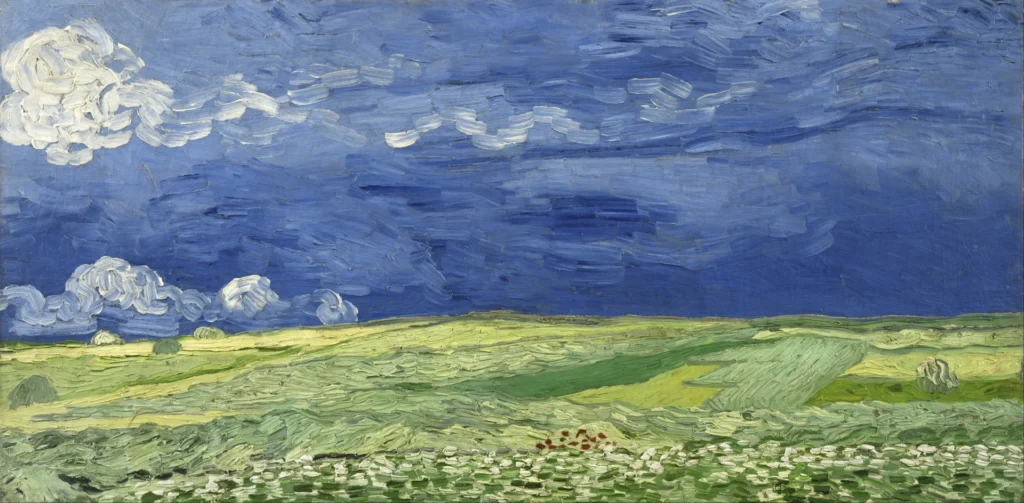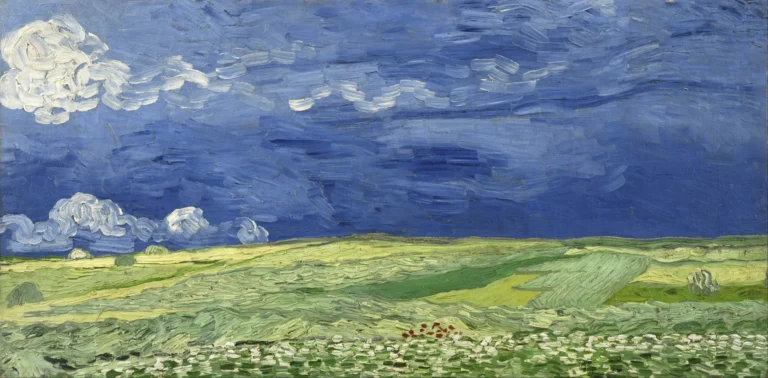Wheatfield Under Thunderclouds
Created during the last weeks of Vincent van Gogh's life in July 1890, Wheatfield Under Thunderclouds is a striking oil painting that combines vivid colors and emotive brushwork. In this artwork, the elongated format emphasizes the landscape, with a green wheatfield adorned with flowers beneath a stormy blue sky. Van Gogh sought to express the duality of sadness and fortitude, mirroring his personal struggles with mental illness and his deep love for the natural world. This work is truly a reflection of his emotional state as well as his vibrant artistry.
July 1890
About the Artwork
This remarkable artwork was painted by Vincent van Gogh in the serene setting of Auvers-sur-Oise during his final weeks, just before his tragic death. Under the care of Dr. Paul Gachet, van Gogh created an array of wheatfield paintings, seeking to capture his inner turmoil while paying homage to the beauty of nature. Wheatfield Under Thunderclouds portrays not only the stunning landscape but also van Gogh's mental state—a portrayal of contrasting emotions where vibrant life meets looming darkness. His correspondences reveal his intentions; he wanted to convey feelings of sadness intertwined with a sense of resilience found in the countryside. Now, more than a century later, this painting continues to resonate with viewers, signifying both van Gogh's artistic brilliance and the intensity of his experiences.
Did You Know
Wheatfield Under Thunderclouds was one of the last paintings created by Vincent van Gogh, a few weeks before his death, showcasing his emotional turmoil during this critical period of his life.
This painting is emblematic of van Gogh’s struggle with mental illness, representing contrasting feelings of sadness and vitality, capturing a profound connection to the natural world.
Since its creation, Wheatfield Under Thunderclouds has become a significant piece in van Gogh’s oeuvre, housed at the Van Gogh Museum where it draws countless visitors eager to experience the depth of his artistry.










